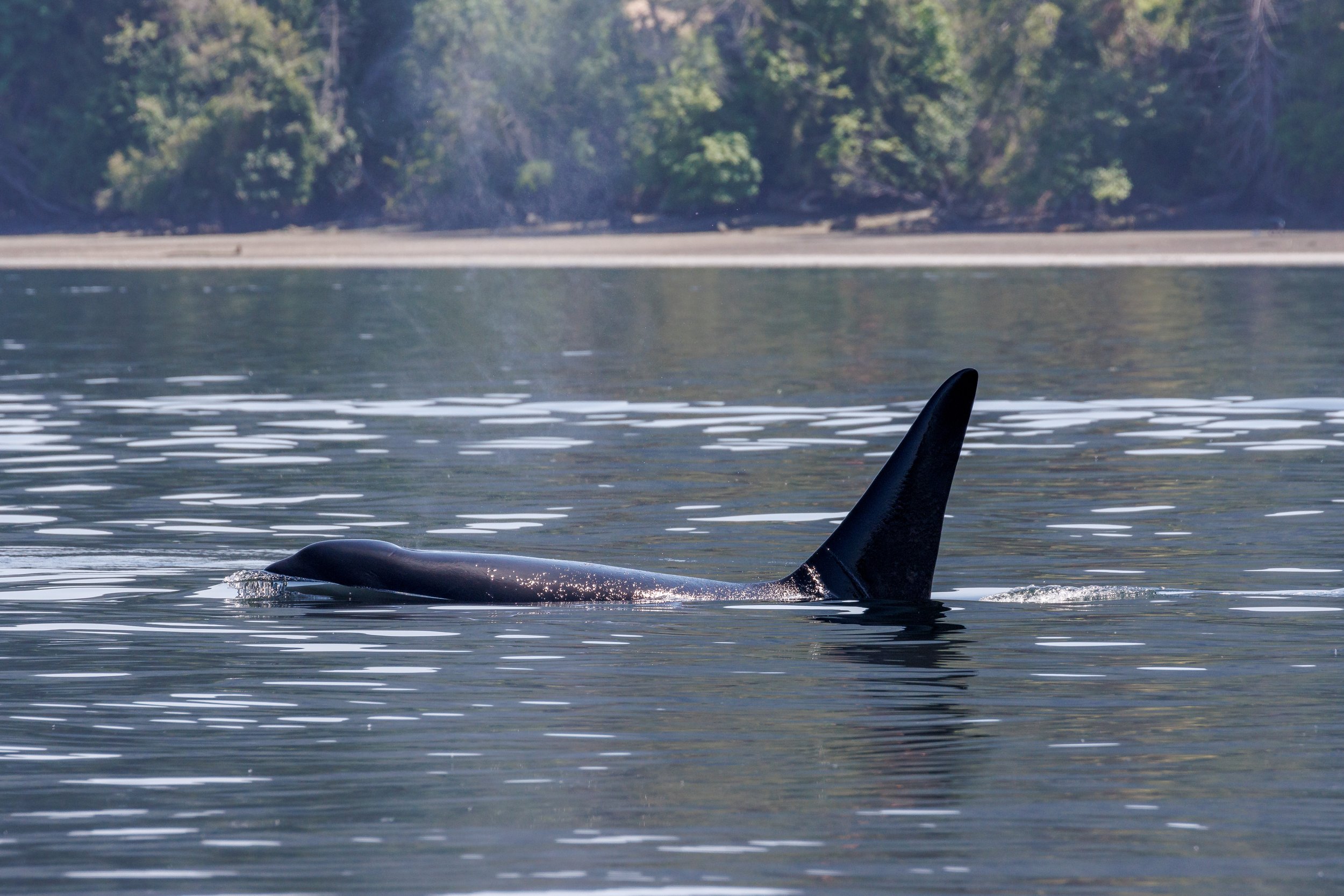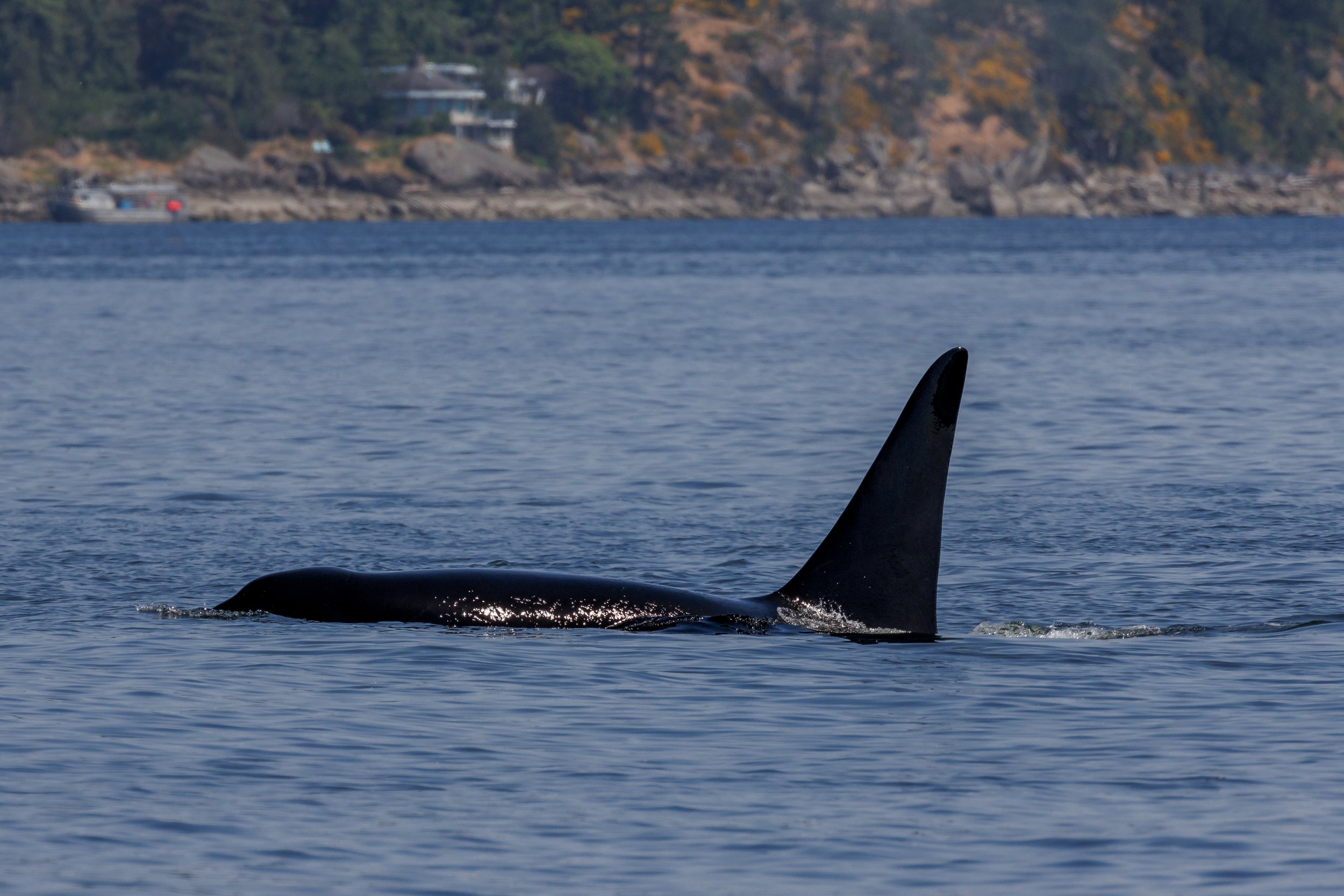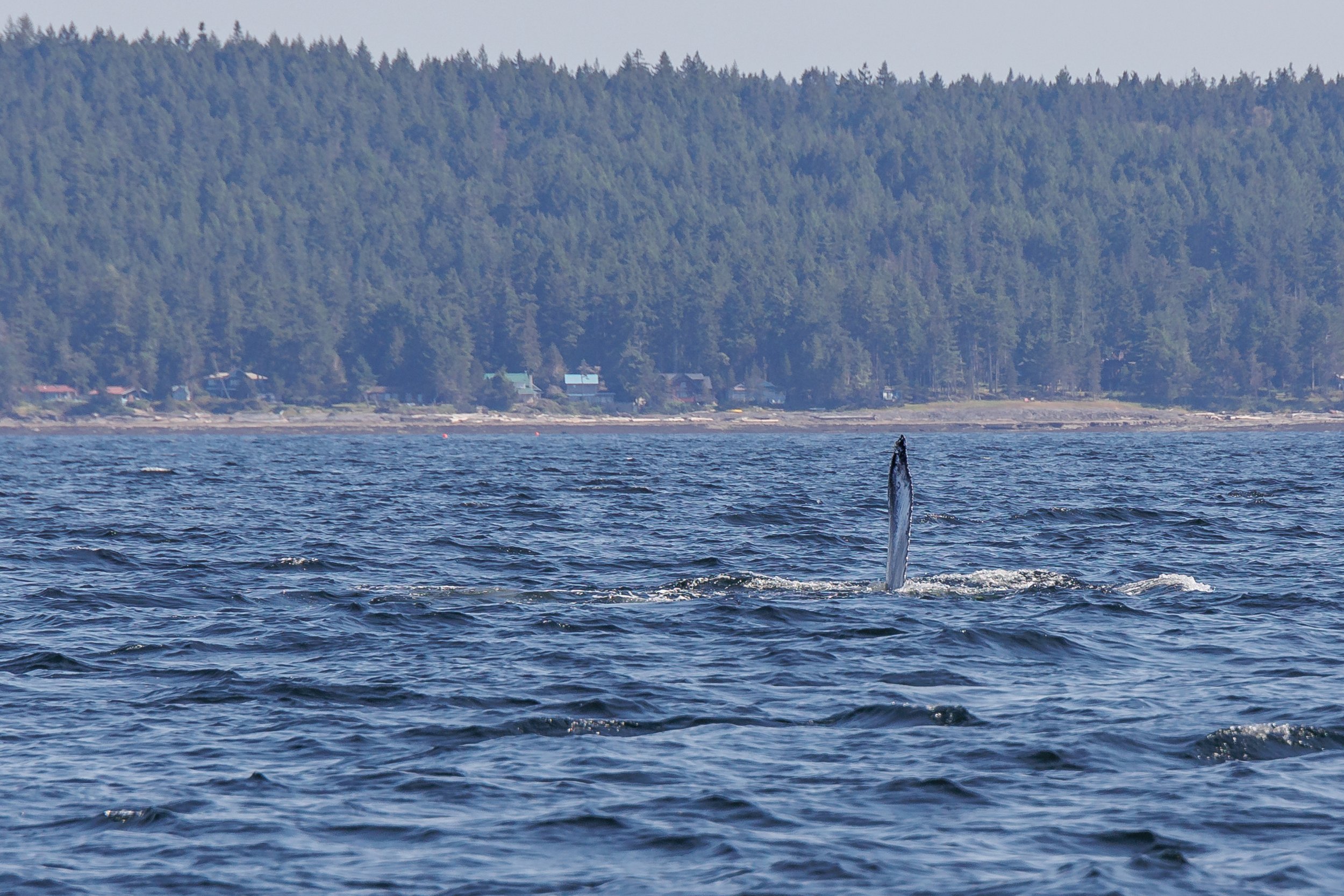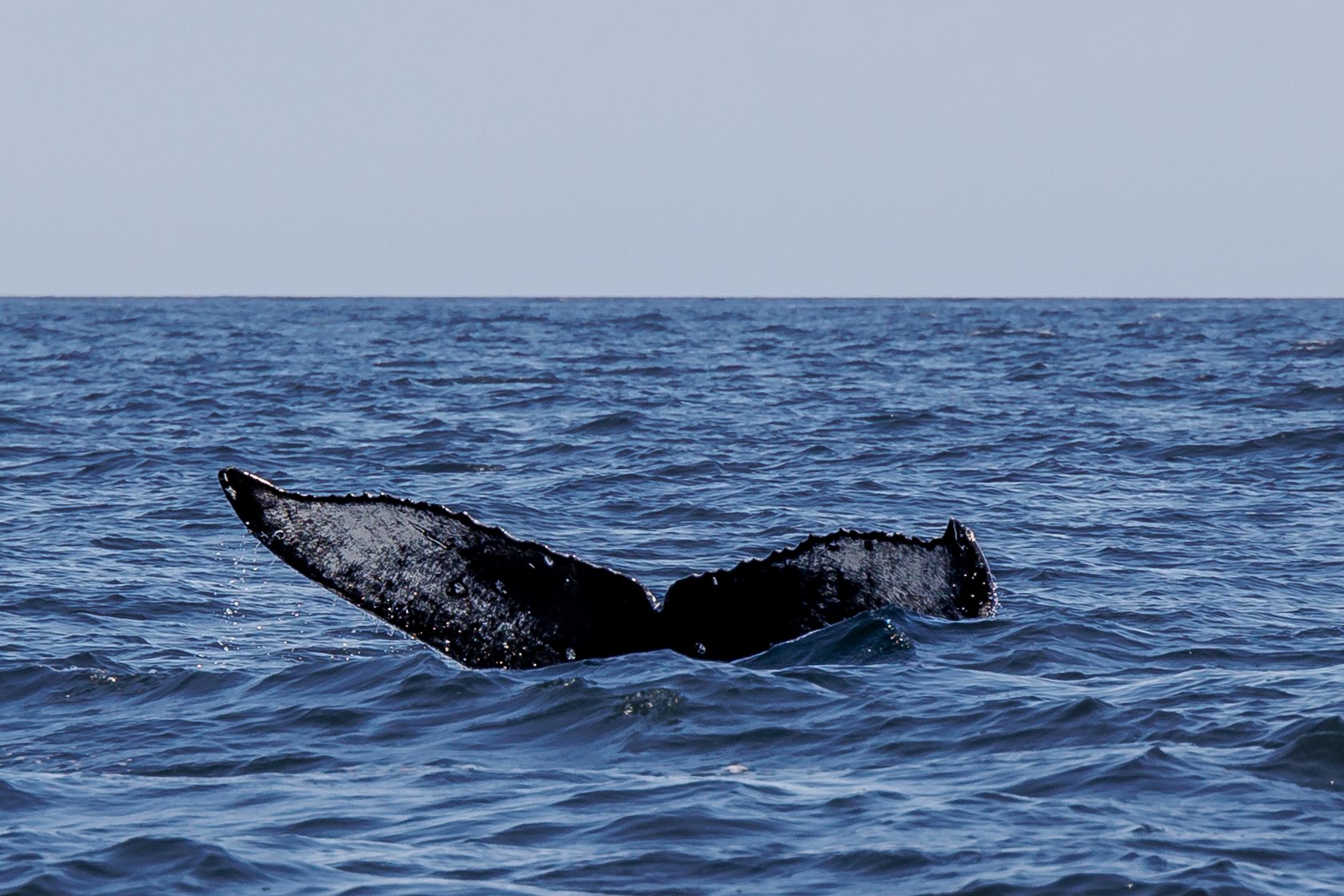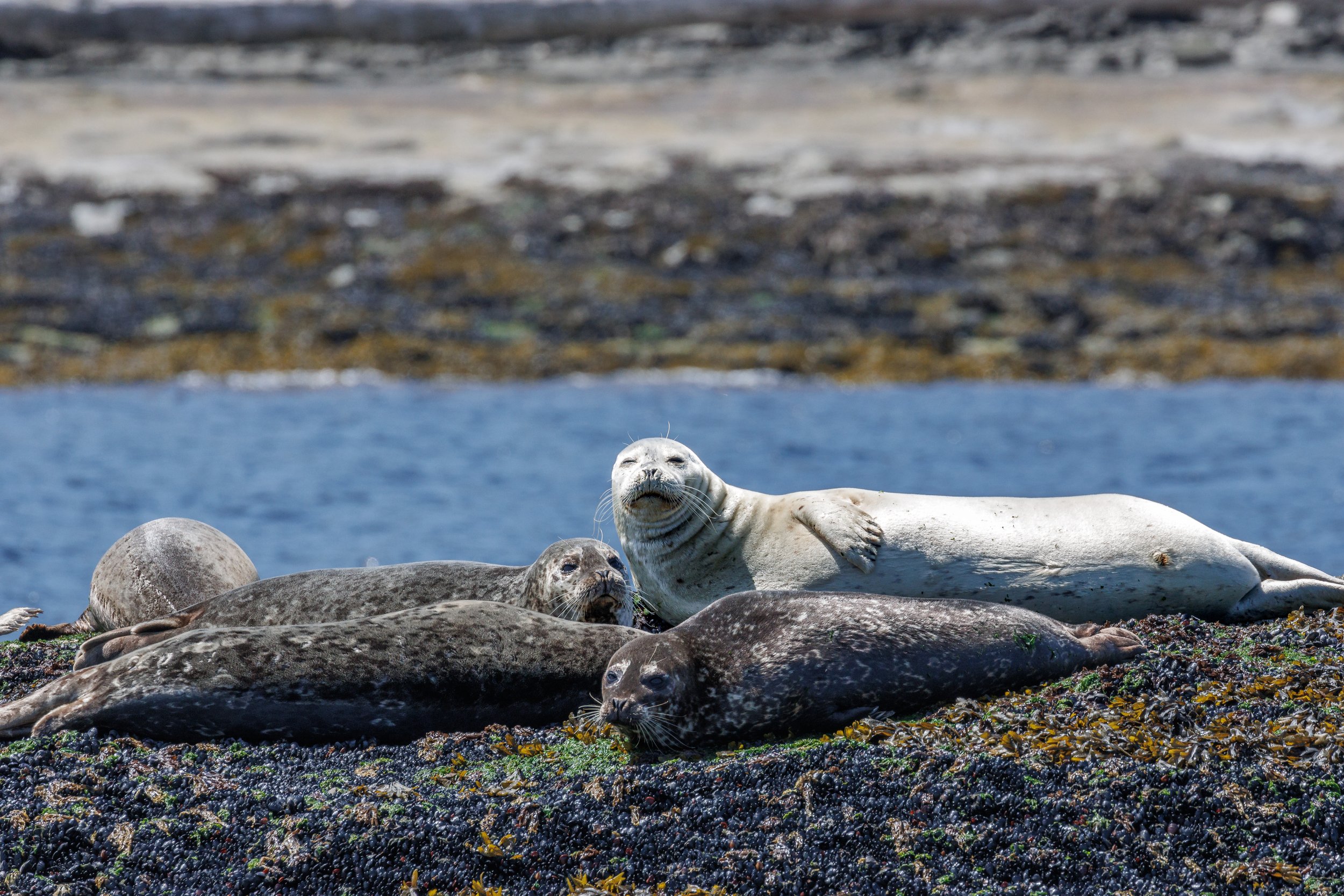May 25, 2023 - T101s off of Crofton and 4 Humpbacks North of Entrance Island
The day was filled with many different marine mammals! Our journey began with venturing through Dodd Narrows and Gabriola Pass to the east side of Valdes Island to view some sea lions on Stinky Rock. They were being very sleepy today, likely enjoying the sunshine. We also stopped to see some seals that were also enjoying the beautiful summer weather.
Next, we headed southeast toward Sansum Narrows. Our open vessel this day spotted our pod or orcas first, just as they were travelling northwest through Sansum Narrows.
The transient orca pod that we saw included:
T101 Reef ♀ (≤1969)
T101A Rush ♂ (1993)
T101B Lagoon ♂ (1997)
Lagoon, the younger son of Reef passed closely next to our open boat Cascadia, before separating from his mom and brother for nearly an hour. Reef (T101) and Rush (T101A) travelled towards the Crofton Pulp Mill, likely chasing its next meal as the seagulls appeared to fly close, desperate for some scraps. A fishing vessel nearby was surrounded by some of them as they tried to mooch some scraps from them as well. Reef and Rush quickly turned and started moving East, away from the pulp mill, and towards Lagoon. Once reunited, they celebrated with a tail lob and tail slap and some close passes at the end of our time with them this day. Generally, when we see orca pods split up they are trying to catch their prey by cornering them at different angles and waiting for them to get tired or lazy so they can strike them with their tail or get close enough to bite them. Orcas have a bite force of about 19,000 PSI. As we watched Reef, Rush and Lagoon travel off together going north-west, we began our trip back to the harbour.
As we headed back towards Nanaimo, we stopped at the Gabriola Island bluffs to view the Cormorants and their nesting habits. Cormorants are migratory birds in this area, spending their winters in Mexico and making their way back here in the spring. We have two different species on the cliffside, the Pelagic Cormorants and Double-crested Cormorants, both performing the same nesting habits. Cormorants will collect grass, leaves or seaweeds to add to their nest and then they will poop on it in order to glue it there, as Cormorant poop acts as an adhesive when it dries. Another reason that we go to the Gabriola bluffs is to view all of the amazing sandstone formations. Over millions of years, wave action has slowly eroded the sandstone and created some unique bubbling formations. there are a few different places on Gabriola Island that have a sandstone cliffside, but the bluffs in Northumberland Channel are the oldest, at 74 million years old.
After viewing the bluff formations, there were reports of several humpbacks just north of Gabriola Island that we went to investigate. We were able to spot four different humpbacks this day:
Scuba (Zigzag’s 2019 calf)
Schooner (Zigzag’s 2021 calf)
Lorax (KEX0057)
KEY0042
There was a lot of surface behaviour from our humpbacks today, with some half flukes shown and a showing of a lovely pec fin by one of our whales. KEY0042 was first spotted by us in October during a staff trip near Hornby Island and they have not received a name yet but hopefully, we’ll see a name given to them soon! As more and more humpbacks head back up north from their warm water breeding grounds, we’re excited to see who else makes a return in May!
Photos on this day were taken by Marine Naturalists Carmen Murphy and Vanessa Vereschahen.
The T101 brothers. Photo by Vanessa Vereschahen.
T101 Reef. Photo by Carmen Murphy.
T101B Lagoon. Photo by Carmen Murphy.
T101A Rush. Photo by Carmen Murphy.
T101B Lagoon. Photo by Carmen Murphy.
T101B Lagoon. Photo by Carmen Murphy.
T101 Reef. Photo by Carmen Murphy.
T101 Reef. Photo by Carmen Murphy.
T101A Rush. Photo by Carmen Murphy.
T101B Lagoon. Photo by Carmen Murphy.
T101B Lagoon. Photo by Carmen Murphy.
Photo by Carmen Murphy.
T101B Lagoon. Photo by Carmen Murphy.
T101 Reef. Photo by Carmen Murphy.
T101 Reef. Photo by Carmen Murphy.
Big shiny whale! Photo by Vanessa Vereschahen.
Photo by Vanessa Vereschahen.
KEY0042. Photo by Carmen Murphy.
Schooner. Photo by Carmen Murphy.
Photo by Carmen Murphy.
Photo by Carmen Murphy.
Schooner (Zigzag’s 2021 calf). Photo by Carmen Murphy.
The tip of Schooner (Zigzag’s 2021 calf)’s left fluke. Photo by Carmen Murphy.
Photo by Vanessa Vereschahen.
Photo by Vanessa Vereschahen.
Photo by Vanessa Vereschahen.
Lorax. Photo by Vanessa Vereschahen.
Lorax. Photo by Vanessa Vereschahen.
KEY0042 - sometimes we have to work with awkward angles like this to ID from! Photo by Vanessa Vereschahen.
KEY0042. Photo by Vanessa Vereschahen.
Photo by Vanessa Vereschahen.
Schooner (Zigzag’s 2021 calf). Photo by Vanessa Vereschahen.
Schooner (Zigzag’s 2021 calf).Photo by Vanessa Vereschahen.
Photo by Carmen Murphy.
Photo by Carmen Murphy.
Photo by Carmen Murphy.
Photo by Carmen Murphy.
Photo by Carmen Murphy.






